National Oceanography Centre, Southampton
Type of resources
Topics
Keywords
Contact for the resource
Provided by
Years
Formats
Update frequencies
Scale
-

The potential for leakage of CO2 from a storage reservoir into the overlying marine sediments and into the water column and the impacts on benthic ecosystems are major challenges The potential for leakage of CO2 from a storage reservoir into the overlying marine sediments and into the water column and the impacts on benthic ecosystems are major challenges associated with Carbon Capture and Storage (CCS) in subseafloor reservoirs. To investigate the consequences of CO2 leakage for the marine environment, a field-scale controlled CO2 release experiment was conducted in shallow, unconsolidated marine sediments. Changes of the chemical composition of the sediments, their pore waters and overlying water column were monitored before, during and up to 1 year after the 37-day long CO2 release from May 2012 to May 2013. In particular this focused on changes in the solid phase (physical properties, major and minor elemental composition, inorganic and organic carbon content), the pore water chemical composition (cations, anions, nutrients and the carbonate system parameters total alkalinity, dissolved inorganic carbon and isotopic signature of DIC) and the water column chemical composition (oxygen, nutrients, total alkalinity and dissolved inorganic carbon). This dataset was collected by the National Oceanography Centre (NOC) under the program QICS (Quantifying and monitoring environmental impacts of geological carbon storage) which was funded by the Natural Environment Research Council (NERC), with support from the Scottish Government. The results are contained in an Excel file. QICS project website: www.bgs.ac.uk/qics/home.html. Lichtschlag et al. (2014) Effect of a controlled sub-seabed release of CO2 on the biogeochemistry of shallow marine sediments, their pore waters, and the overlying water column, http://www.sciencedirect.com/science/article/pii/S1750583614003090 (doi:10.1016/j.ijggc.2014.10.008).
-
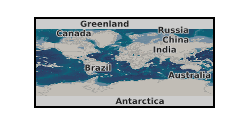
Carbon capture and storage is a mitigation strategy that can be used to aid the reduction of anthropogenic CO2 emissions. This process aims to capture CO2 from large point-source emitters and transport it to a long-term storage site. For much of Europe, these deep storage sites are anticipated to be sited below the sea bed on continental shelves. A key operational requirement is an understanding of best practice of monitoring for potential leakage and of the environmental impact that could result from a diffusive leak from a storage complex. Here we describe a controlled CO2 release experiment beneath the seabed, which overcomes the limitations of laboratory simulations and natural analogues. The complex processes involved in setting up the experimental facility and ensuring its successful operation are discussed, including site selection, permissions, communications and facility construction. The experimental design and observational strategy are reviewed with respect to scientific outcomes along with lessons learnt in order to facilitate any similar future. This is a publication in QICS Special Issue - International Journal of Greenhouse Gas Control, Peter Taylor et. al. Doi:10.1016/j.ijggc.2014.09.007.
-

The spreadsheet gathers the data collected during two experiments conducted on a synthetic sandstone core sample to assess geophysical monitoring techniques, storage capacity evaluation and the geomechanical integrity of shallow CO2 storage reservoirs. The tests were conducted in the rock physics laboratory at the National Oceanography Centre, Southampton, during 2016, as part of the DiSECCS project with funding from the United Kingdom's Engineering and Physical Sciences Research Council (EPSRC grant EP/K035878/1) and the Natural Environment Research Council (NERC). One experiment was a steady state brine-CO2 flow-through test (so called BTFT in the spreadsheet) to simultaneously evaluate storage capacity and identify pore fluid distribution and mechanical indicators during CO2 geosequestration. The confining and pore pressure conditions were similar to those estimated for shallow North Sea - like storage reservoirs, but simulating inflation/depletion cyclic scenarios for increasing brine:CO2 fractional flow rates. The second experiment focused on the assessment of geomechanical changes (the so called GAT in the spreadsheet) during and after CO2 storage activities under the same stress conditions. The data include ultrasonic P- and S-wave velocities and their respective attenuation factors and axial and radial strains in both tests, and electrical resistivity in the case of the flow-through test.
-

The spreadsheet gathers the data collected during a brine:CO2 flow-through experiment conducted on a synthetic sandstone core sample to present the capabilities of a novel 'multiflow experimental rig for CO2 experiments' designed and assembled at the National Oceanography Centre, Southampton. The test was configured to assess geophysical monitoring techniques in shallow tight (North Sea-like) CO2 storage sandstone reservoirs. The tests were conducted in the rock physics laboratory at the National Oceanography Centre, Southampton, during 2015, as part of the DiSECCS project with funding from the United Kingdom's Engineering and Physical Sciences Research Council (EPSRC grant EP/K035878/1) and the Natural Environment Research Council (NERC). The experiment was a steady state brine-CO2 flow-through test to replicate CO2 geosequestration conditions and evaluate geophysical monitoring techniques. The confining and pore pressure conditions were similar to those estimated for shallow North Sea - like storage reservoirs, but simulating inflation/depletion cyclic scenarios for increasing brine:CO2 fractional flow rates. The data include ultrasonic P- and S-wave velocities and their respective attenuation factors, axial strains, and electrical resistivity; also relative permeability to both fluids (CO2 and brine) is displayed as a function of pore volume times, associated to increasing CO2 to brine contents in the sample.
-

The spreadsheet gathers the data collected during an experiment conducted on a Utsira Sand formation core sample to complements and constrains existing geophysical monitoring surveys at Sleipner and, more generally, improves the understanding of shallow weakly-cemented sand reservoirs. The tests were conducted in the rock physics laboratory at the National Oceanography Centre, Southampton, during 2016, as part of the DiSECCS project with funding from the United Kingdom’s Engineering and Physical Sciences Research Council (EPSRC grant EP/K035878/1) and the Natural Environment Research Council (NERC). The experiment was a steady state brine-CO2 flow-through test to simultaneously evaluate ultrasonic waves, electrical resistivity (converted into pore fluid distribution) and mechanical indicators during CO2 geosequestration in shallow weakly-cemented reservoirs. The confining and pore pressure conditions were similar to those estimated for Sleipner (North Sea – like storage reservoirs), but simulating inflation/depletion cyclic scenarios for increasing brine:CO2 fractional flow rates. The data include primary ultrasonic wave velocities and attenuation factors, axial and radial strains, and electrical resistivity. Also, we provide a velocity-saturation relationship of practical importance to CO2 plume monitoring, obtained from the inversion of ultrasonic velocity and attenuation data and extrapolation of results to field-scale seismic-frequencies using a new rock physics theory. The dataset is linked to this publication: http://www.sciencedirect.com/science/article/pii/S1750583617306370.
-

The spreadsheet gathers the data collected during a brine:CO2 flow-through experiment conducted on a weakly-cemented synthetic sandstone core sample using the multiflow experimental rig for CO2 experiments, designed and assembled at the National Oceanography Centre, Southampton. The test was configured to assess geophysical monitoring and deformation of reservoirs subjected to CO2 injection in shallow weakly-cemented (North Sea-like, e.g., Sleipner) CO2 storage sandstone reservoirs. The tests was conducted in the rock physics laboratory at the National Oceanography Centre, Southampton, during 2015-2016, as part of the DiSECCS project with funding from the United Kingdom’s Engineering and Physical Sciences Research Council (EPSRC grant EP/K035878/1) and the Natural Environment Research Council (NERC). The experiment was a steady state brine-CO2 flow-through test in which realistic shallow CO2 geosequestration conditions were simulated, to related geophysical signatures to the hydrodynamic and geomechanical behaviour of the rock sample. The confining and pore pressure conditions were similar to those estimated for shallow North Sea Sleipner-like, storage reservoirs, but simulating inflation/depletion cyclic scenarios for increasing brine:CO2 fractional flow rates. The data include ultrasonic P- and S-wave velocities and their respective attenuation factors, axial, radial and volumetric strains, and electrical resistivity; also relative permeability to both fluids (CO2 and brine) is displayed as a function of pore volume times, associated to increasing CO2 to brine contents in the sample.
-
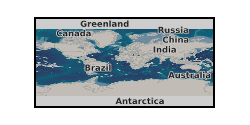
NERC grant NE/R013535/1. Here we present the dataset collected during a brine-CO2 flow-through test using a synthetic sandstone with oblique fractures, performed under realistic reservoir conditions stress. We monitored geophysical, mechanical and transport properties, for drainage and imbibition conditions, representative of the injection and post-injection stages of the CO2 storage process. We collected ultrasonic P- and S-wave velocities and their respective attenuation factors, axial and radial strains, electrical resistivity, pore pressure, temperature and brine and CO2 partial flows (from which relative permeability was later calculated).
-
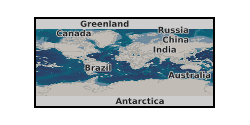
The use of synthetic samples for rock physics experiments in the lab is a common practice for reservoir characterization and reservoir studies. This dataset gather ultrasonic P- and S-wave velocities and attenuations, electrical resistivity, axial and radial strains, permeability and mineralogical composition, of two synthetic and two natural sandstones, measured at variable realistic reservoir conditions of stress. The data were collected during an original study which aimed to assess the extent to which the measured properties between synthetic and natural sandstones are comparable. The work was accepted for publication in Geophysical Prospecting on the 01/10/2018, which can be accessed following the link: https://doi.org/10.1111/1365-2478.12699 Falcon-Suarez, I.H., Amalokwu, K., Robert, K., North, L., Best, A.I., Delgado-Martin, J., Callow, B., Sahoo, S.K. (accepted). Comparison of stress dependent geophysical, hydraulic and mechanical properties of synthetic and natural sandstones for reservoir characterisation and monitoring studies. Geophysical Prospecting
-
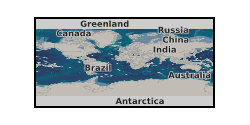
Here we present the dataset collected during a CO2 flow-through test using a synthetic sandstone of high porosity and permeability, originally saturated with high salinity brine, performed under realistic shallow reservoir conditions stress. During the test, we collect geophysical data (elastic and electrical properties) which record petrophysical variations in the rock related to the precipitation of salt, induced by a continuous CO2 flow through the sample.
-
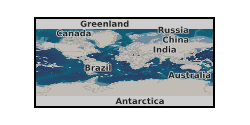
This excel spreadsheet contains P-wave and S-wave velocity and attenuation data calculated with a novel rock physics model for hydrate bearing sediments. The model has been published in: Marín-Moreno, H., S. K. Sahoo, and A. I. Best (2017), Theoretical modeling insights into elastic wave attenuation mechanisms in marine sediments with pore-filling methane hydrate, Journal of Geophysical Research: Solid Earth, 122(3), 1835-1847, doi:10.1002/2016JB013577.
 BGS Data Catalogue
BGS Data Catalogue